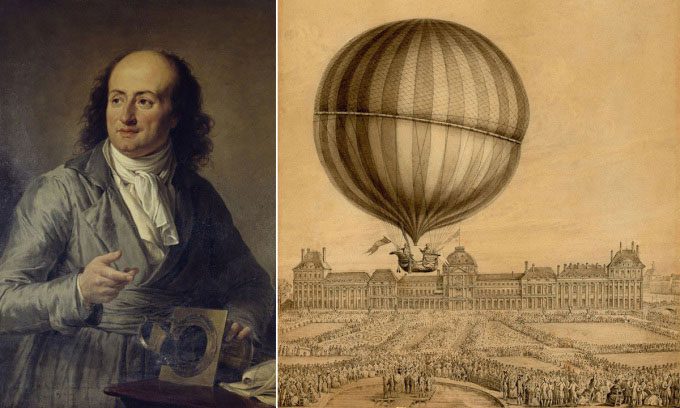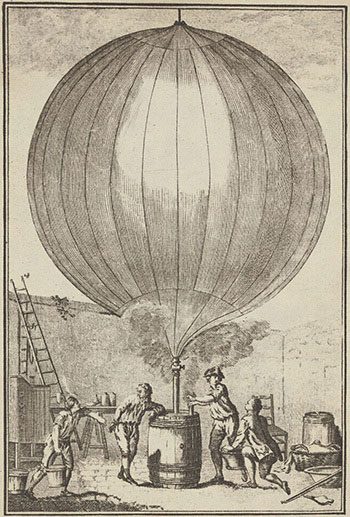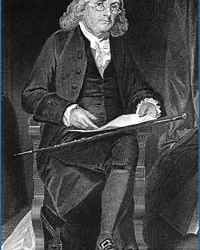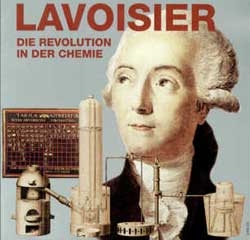Inspired by hot air balloons, inventor Jacques Charles decided to create a hydrogen balloon that he believed was safer.

Illustration of Jacques Charles and his first manned hydrogen balloon flight with Nicolas-Louis Robert on December 1, 1783. (Image: Amusing Planet).
On June 4, 1783, the Montgolfier brothers publicly demonstrated the hot air balloon for the first time in southern France. The balloon, made from sackcloth lined with paper, soared to an altitude of nearly 2 kilometers and remained airborne for 10 minutes. News of their success quickly spread to Paris, igniting the interest of Jacques Charles, a French inventor and scientist well-versed in the properties of gases.
After studying the works of researcher Robert Boyle and contemporaries such as Henry Cavendish, Joseph Black, and Tiberius Cavallo, Charles believed that hydrogen was more suitable for lifting balloons than hot air. He considered hot air balloons to be quite dangerous due to the open flame, while hydrogen, being flammable but completely enclosed within the balloon, was safer.
Jacques Charles decided to construct a new balloon. He hired two engineers, brothers Anne-Jean Robert and Nicolas-Louis Robert, to help create what would later become the world’s first hydrogen balloon. To fund this expensive endeavor, naturalist and geologist Barthélemy Faujas de Saint-Fond launched a public subscription fund and sold tickets for the balloon demonstration. The Parisian elite, having witnessed the impressive flight of the Montgolfier brothers a few weeks earlier, eagerly signed up.
Charles designed the balloon and suggested that the Robert brothers create a lightweight but airtight gas bag. The Roberts devised a method of dissolving rubber in rosin and used this mixture to coat silk panels, making them airtight. They then sewed the silk panels together to form the main envelope.
The balloon was relatively small, with a diameter of about 4 meters and could lift approximately 9 kilograms. To fill the balloon with hydrogen, a large amount of hydrochloric acid was first poured into a container filled with iron filings. The hydrogen produced was then channeled into the balloon through a tube connected to the container.

The process of filling the first hydrogen balloon. (Image: National Air and Space Museum)
On August 27, 1783, the world’s first unmanned hydrogen balloon took off from Champ de Mars in Paris. The balloon ascended just as a thunderstorm began to roll in. However, the bad weather did not dampen the enthusiasm of the crowd gathered below. The balloon soared straight up into the sky and disappeared among the clouds within minutes.
About 45 minutes after takeoff, the balloon lost some hydrogen, descended, and landed in a village located 24 kilometers north of Paris. The villagers, unaware of the existence of the balloon, were frightened by the sudden appearance from the sky. They attacked the strange object with various farming tools and even guns.
Excited by the success of this first flight, Charles and the Robert brothers began preparing for their next effort – to carry one or two people in the balloon. On December 1, 1783, Charles and Nicolas-Louis ascended in the balloon and reached an altitude of approximately 500 meters. They flew for 2 hours and 5 minutes, covering 36 kilometers, before safely landing in the plains of Nesle, north of Paris at sunset.
Nicolas-Louis disembarked while Charles took off again, this time ascending rapidly to an altitude of about 3,000 meters and seeing the sun once more. However, the sharp pain in his ears from the low atmospheric pressure began to discomfort him, forcing him to descend. He landed gently at Tour du Lay, about 3 kilometers away.
Despite this successful flight, Charles decided not to fly again, although he continued to design balloons. One of his designs was a long, steerable balloon, developed according to the suggestions of French mathematician Jean Baptiste Meusnier. This vehicle was equipped with a rudder and oars to provide thrust, but these proved ineffective.
On July 15, 1784, the Robert brothers flew this balloon for 45 minutes. They later continued flying with M. Collin-Hullin on September 19, 1784. They flew for 6 hours and 40 minutes, covering a distance of 186 kilometers from Paris to Beuvry near Béthune, becoming the first balloonists to travel more than 100 kilometers.





















































